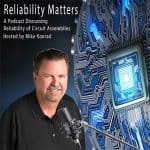
From Solo to Collaboration: Lessons from Nobel Laureate Shuji Nakamura and Dale Carnegie
Are you harnessing the power of collaboration in your professional life? What could Shuji Nakamura, the Nobel Prize-winning engineer behind the blue LED, teach you about teamwork and career growth? Discover how transitioning from an independent researcher to a collaborative leader can elevate your professional journey.
Join me, Dianna Deeney, as I share insights from a recent event co-hosted for the IEEE Philadelphia Professional Communication Society. We’ll uncover valuable lessons from the books “Brilliant!” by Bob Johnstone and Dale Carnegie’s classic “How to Win Friends and Influence People,” both of which spotlight the transformative power of teamwork and communication.
Learn about Shuji Nakamura’s career evolution and find out how his story parallels many of our own professional paths. I’ll also dive into my personal shift from solitary work to embracing collaboration in quality engineering. By leveraging quality tools for better communication and idea sharing within cross-functional teams, you too can drive more successful engineering and design projects. This episode is packed with actionable advice and inspiring anecdotes to help you thrive in your professional life.
Don’t miss out on knowing THE baseline approach that can lead to collaboration success!









